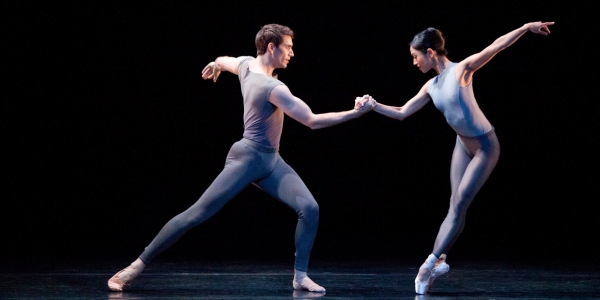“The reason behind it is because of our history at the Australian Ballet and the influences from Britain, our style of dancing and our range of repertoire,” says Brett Simon, soloist at the ABC. British Liaisons is a triple-bill -a production composed of three separate ballets whose only connection to each other is that each holds a place in the British-Australian narrative. “Each piece has a bit of a significant place in our repertoire in the history of our company,” says Simon. Checkmate was created by the founder of the Royal Ballet in England (Dame Ninette de Valois) and she actually gifted the ballet to the Australian Ballet when they were touring it in the 80s so that’s been quite prominent in our history. Concerto is by Kenneth MacMillan who is a very influential and well-known British choreographer. That’s a showcase of his work and of our dancing as well because Concerto doesn’t have a storyline – it’s quite abstract in that way so it’s more of a showcase. And then After The Rain, the company did in 2007, so that’s a more modern addition to our repertoire but it was received so well that it’s come back again.”
Simon notes that the three pieces span over nearly a decade. Checkmate, the deadly chess drama between two sides, Love and Death was written in 1937. Concerto, set to Russian composer Shostakovich’s Piano Concerto 2, was created in 1966 and Christopher Wheeldon’s After The Rain, the emotive and romantic piece, was written in 2005. These time lapses between creations contribute to the dramatic differences between the three pieces and promise the audience the kind of variety not always present in one, full-length production. Simon appears in all three ballets. “After The Rain has three couples so I’m one of the three men in that piece,” he says. “The Concerto piece is a larger group so there’s the corps ballet – I’m one of the soloist couples in that but I also cover the principle couples. Then in Checkmate, I’m one of the black knights.”
Simon as promoted to the position of soloist at the beginning of the year. His new title is the reason why he is sometimes a soloist or principal and, at other times, part of the corps. “Principal dancers are the top rank in the company so they do all the principal roles and then between soloist and principal, there’re senior artists – they do more featured roles and principled roles whereas the soloists will basically do the whole gamut,” he explains. Simon, who has been dancing since the age of five, aims to eventually rise to principal dancer. “I started taking tap lessons at my dance school and there were some boys who were a bit older than me that also did ballet and jazz and I enjoyed it so much that that’s also what I wanted to do so I also followed that cause I looked up to them and was inspired and I just took to it. I’ve been fortunate to be able to make a career of it,” he says.
Fortunate is an interesting word to use considering the pain ballet dancers go through to reach career highs. Only recently Natalie Portman gave us a mortifying illustration of a dancer’s inner turmoil and the way one needs to literally break themselves to make it in the industry. Simon agrees that Black Swan mirrors reality to an extent. “There’s a lot of that sort of thing especially with the girls and their toes. The guys don’t go up on points so we don’t tend to have as many toe injuries but we still break bones and injure shoulders and backs because of all the lifting we do. Obviously it’s magnified in a movie sense and especially that movie. But people are always in and out of physio. And managing injuries of some kind is just part of our lives. Ballet is not the most natural thing in the world.”
But injury or no injury, it’s worth it for Simon. “It may be unnatural for the body to do it but for the dancer it feels great. It’s beautiful and it’s such an aesthetic art form that for many people it’s unbelievable the way that the body can move like that,” he says.

